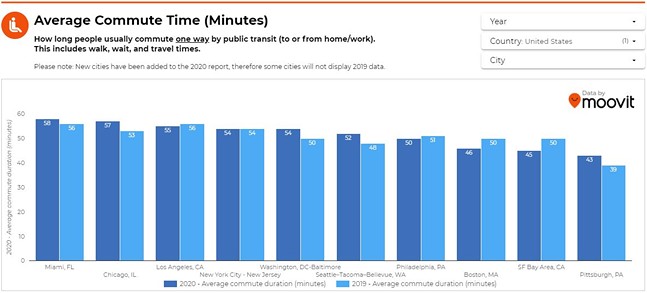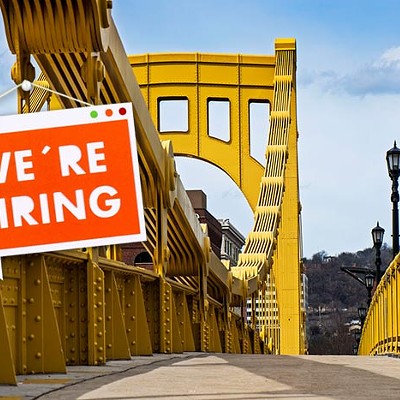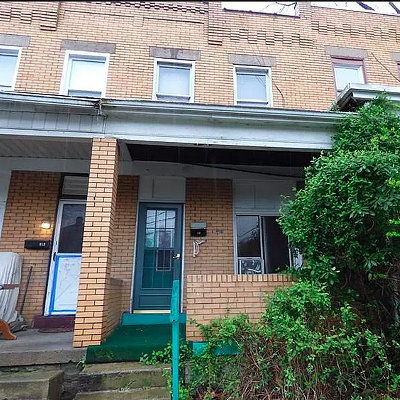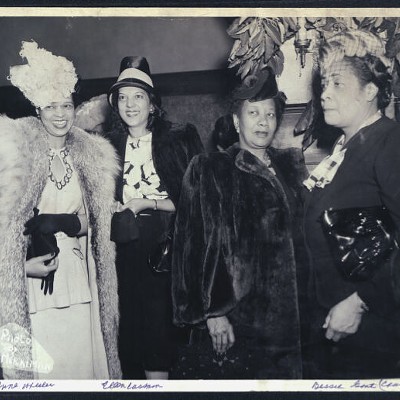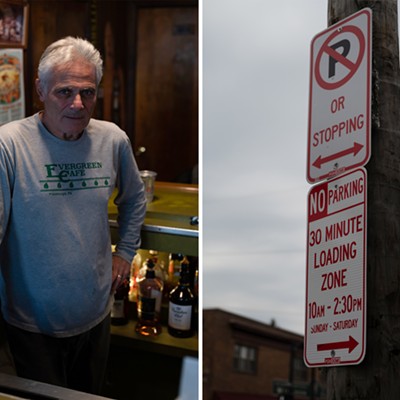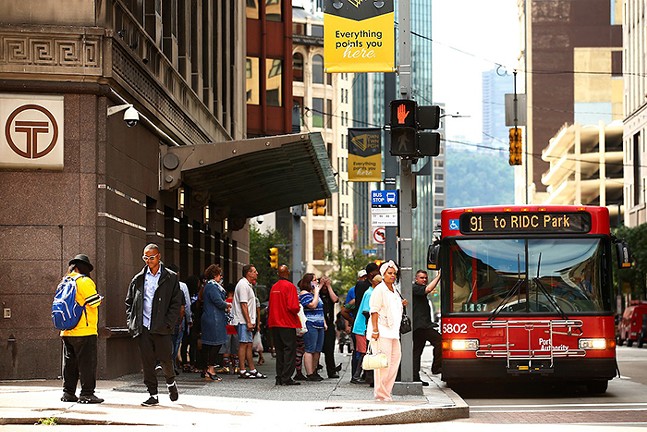
According to data from the public transit app Moovit, Pittsburgh riders in 2020 had the shortest average commute duration times (43 minutes for one-way) of the metro areas studied. Those include Boston, Chicago, Los Angeles, Miami, New York-New Jersey, Philadelphia, Pittsburgh, San Francisco, Seattle-Tacoma-Bellevue, and Washington, DC-Baltimore metropolitan areas.
Miami riders had the highest 2020 average commute times at 58 minutes.
Average transit commute times in Pittsburgh benefit from having a large plurality of transit users experiencing relatively short transit commute times. In 2020, about 48% of transit users in Pittsburgh had a one-way commute of 30 minutes or less.
These relatively short transit commute times appear to be driven by the fact that Pittsburghers are just good at living closer to where they work. The 2020 average distance of transit commute in Pittsburgh was just 3.6 miles. Seattle’s average distance of travel commute was almost double Pittsburgh’s. And only about 11% of Pittsburgh transit riders in 2020 had a transit commute of more than 7.5 miles.
The data also appears to confirm trends that advocates like Pittsburghers for Public Transit were concerned about during the coronavirus pandemic. Between 2019 and 2020, average travel distance decreased, and transfers increased, while single line trips decreased. Early in the pandemic, PPT argued that service cuts that came before federal relief arrived should target lines that likely had a high amount of commuters who were now working remotely, like the light-rail lines to the South Hills.
The Moovit data appears to back up that those long-distance, single ride lines have been getting less use, while other bus riders who still have to work service jobs and other employment that doesn’t offer remote work have been disproportionately impacted by service cuts.
Port Authority of Allegheny County eventually adjusted service cuts to better service popular bus routes with more frequent service.
Long wait times (waiting longer than 20 minutes during a commute) rose by 6% among Pittsburgh riders between 2019 and 2020. There was also a 10% increase in Pittsburgh transit riders that needed to catch a transfer on their commute between 2019 and 2020.
Overall though, the Moovit data appears to back up the notion of Pittsburgh as an underrated public transit region, and one that is poised for transit growth thanks to its short commutes. In 2020, Pittsburgh transit users walked an average of 0.34 miles from the start to the end of the trip, and during transfers. This is tied for the lowest with New York City.
Even before the pandemic, Pittsburghers still had pretty short average walking trips associated with transit. In 2019, Pittsburghers walked an average of 0.55 miles from the start to the end of the trip, and during transfers. Only New Yorkers had lower walking trips, and a lower share of long walking trips associated with their transit commutes.
Pittsburghers live close to transit and those transit commutes are relatively short. Transit experts have argued it would behoove city and county planners to take advantage of those realities, and allow for and encourage denser development near high-frequency transit, as well as increasing frequency on many of the region’s popular transit lines.
In 2018, transit expert Jarrett Walker, who has redesigned bus networks for cities across the globe, told Pittsburgh City Paper that housing development near busways in Pittsburgh could be much greater than it is now.
According to Moovit, this is Pittsburgh transit users' number one ask too. Pittsburgh transit riders' top two aspects that would encourage them to use public transit more often include “Accurate and reliable arrival times according to the published schedule” (13% of riders put this as top priority) and “Higher frequency of public transit vehicles/shorter waiting times at stations” (11% of riders put this as top priority). Parking for cars, on the other hand, is much less of a concern. Only 3.2% of riders said their top priority is “Convenient parking areas near stations for car owner.”

